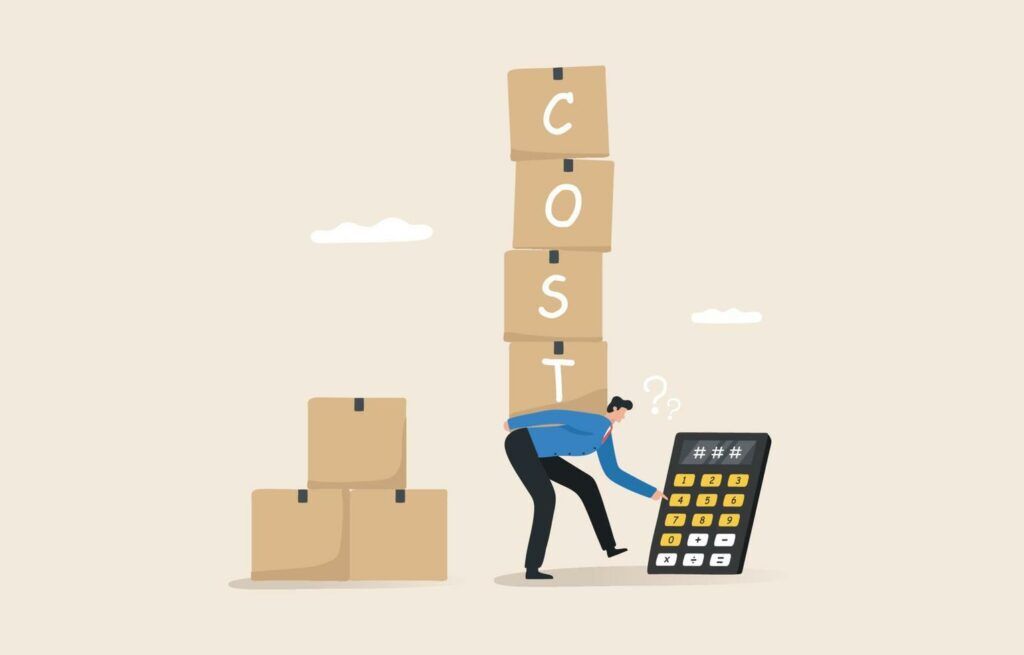

From production to sales to marketing- it takes a gold mine to fund a business. What is incredibly daunting is that these everyday expenses are still not enough to cover all the costs of managing an organisation. Some unusual expenses such as interests, loss on investments, etc., also add to the total expenses incurred by a business. These costs are known as non-operating expenses.
Non-operating expenses like losses, inventory write-downs, restructuring costs, etc., are calculated and listed separately from operating and capital expenses. Separate calculations of operating and non-operating costs give the finance officers, managers and business owners a more accurate and nuanced picture of company performance.
Non-operating expenses are those costs of business that do not directly relate to the core business functions and so do not directly facilitate the production/sales/distribution of the main product or service. They can be both recurring and non-recurring.
For example, lawsuit settlement fees are a one-time expense, while loan interest payments are regular expenses.
An understanding of non-operating expenses is essential for businesses. Knowing how to categorise and calculate non-operating expenses helps finance officers integrate them into financial analyses.
Businesses sometimes finance their operations with the help of loans. This corporate debt incurs a particular interest amount every month. These are non-operating expenses as they do not directly contribute to the company’s overall functioning.
Businesses sometimes have to move all their operations from one location to another. This relocation comes with many unusual costs like transportation, relocation allowances for existing employees, recruitment costs, etc.
When there is a change in the accounting methods, certain discrepancies can arise in the company’s financial records. As a result, some unusual expenses that are not easy to account for may occur. These costs can be put in the non-operating expense category before generating the final reports.
It is common for businesses to invest in other ventures with the purpose of wealth creation. It helps them increase their asset worth and thereafter enables them to grow their value over time with comparatively lower effort.
However, this is not always the case. Investing always comes with certain risks; sometimes, these risks are realised. The funds lost in these loss-incurring investments are a cost to the company and hence can be classified as a non-operating expense.
Businesses keep an inventory of goods to be sold at a later date. These stored goods can suffer damage or pass their expiration date before they can be sold. Such a scenario calls for inventory write-offs.
Inventory write-offs are the practice of officially recognising that a part of the business’s inventory is obsolete, unusable and cannot produce monetary value for the company. This is treated as an expense incurred by the industry and categorised as a non-operating expense.
While legal fees are a part of compensation and come under operating expenses, certain one-time legal costs are classified as non-operating expenses.
Businesses may decide to restructure their operations or personnel from time to time. While crucial to the big picture, this restructuring often comes with additional costs like new salary bonuses, incentives, severance or redundancy packages for laid-off employees, etc.
While restructuring eventually influences the day-to-day operations of the company, the restructuring costs are still incurred for a short period and are classified as non-operating expenses.
Currency translation loss occurs when a company is doing business with international entities. When the host country’s currency fluctuates with respect to the home currency, costs can rise unpredictably. These added costs are then categorised as non-operating expenses.
Once in a while, a naturally occurring disaster may cause irreparable damage to uninsured company property. The cost of replacement for that property becomes a loss for the company. Finance departments can categorise this unusual cost as a non-operating cost.
Business expenses are classified into three categories: capital, operating, and non-operating costs. Let’s look at the critical differences between the three expense categories.
Non-operating expense is a term that we use to describe costs incurred outside of the core, day-to-day functioning of a business. Companies can allot different costs as non-operating expenses on the company’s income statement.
Refer to the company income statement to determine which costs are under the non-operating expenses section. You will find non-operating expenses on the income statement below the operating expenses section.
You can add all the listed items and get the total non-operating costs incurred by your company.

Non-operating expenses examples
Let’s look at a few examples to understand how non-operating expenses work.
Example 1: Suppose company A has taken a loan of 50,000 INR. Per month, they will have to pay a certain interest on this loan. Hence, this interest is an example of non-operating expense.
Example 2: If company X buys goods to sell and stores them at a storage facility. However, they lose track of time and the goods pass the expiration date. The cost of these goods is thereafter a non-operating expense.
Reporting non-operating expenditures has a lot of significance to finance professionals and business owners.
Non-operating expenses appear towards the end of the income statement below the operating costs. Mostly, all non-operating expenditures are clubbed together. However, some companies differentiate between the various non-operating expenses when listing them on the income statement.
Non-operating costs commonly appear with non-operating income. Non-operating income is the income generated by a business through activities that are not the business’ primary offering. For example, the returns on business investments, gains from foreign exchanges, sales of assets, etc., are different types of non-operating income.
Non-operating income is the total earnings or loss coming outside of the core functions of the business. Like non-operating costs, non-operating income is also most likely to be a one or two-time occurrence.
Examples of non-operating income include interest income, writedown on assets, gains or losses from currency translations and foreign exchange, sales of assets, etc.
Non-operating income includes the following items.
Managing expenses is one of the most tricky things that businesses do. Little discrepancies and innocent mistakes in expense recording and organisation can lead to enormous losses. Thankfully, companies can automate a large chunk of their spend management processes.
There are many software in the market that can help you manage various expense procedures. Happay is a platform that serves as a one-stop solution for all spend management needs.
Whether it is petty cash, travel and expense, fleet expenses, or employee tax benefits solutions, Happay has everything. Schedule a demo with the Happay team and learn how it can help you increase your savings and optimise your spend management system.
Non-operating expenses appear on a company’s income statement below the operating expenses.
2. What is meant by the term ‘non-operating’?‘Non-operating’ means activities that are not directly contributing to the production, sales, facilitation etc. of a business’ main offering.
3. What are non-operating assets?Assets that are extra assets of a business are non-operating assets. They don’t facilitate the core functions of the company. Examples of non-operating assets are marketable securities, unallocated cash, vacant land, unused equipment, and loans receivable.
4. What are examples of non-operating expenses?Some examples of non-operating expenses are lawsuit settlements, inventory write-offs, interest on borrowed funds, etc.
5. Is depreciation a non-operating expense?No, depreciation is an operating expense. This is because the asset is a part of core business costs and operations.
6. What are non-operating items?Non-operating items include sales of assets, inventory write-offs, gain or loss from foreign exchange, interest income, investment income, etc.
7. What is the meaning of non-opearting expenses?Non-operating expenses are all business costs that do not facilitate core business operations. They can include costs like lawsuit settlement fees, interest payments, etc.